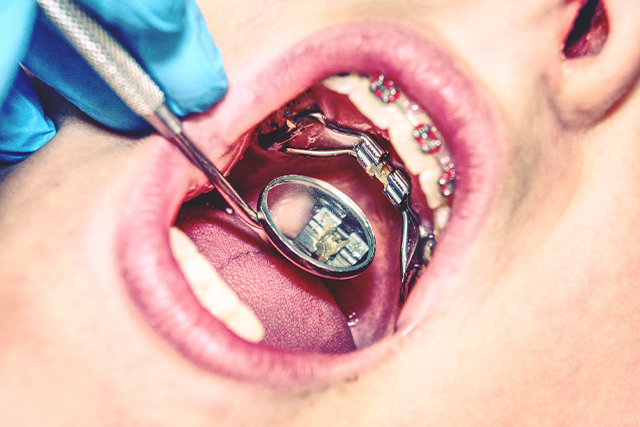Can You Get a Palatal Expander and Braces at the Same Time?

Long Beach, CA – Many orthodontic patients receive treatment that includes more than just braces. Orthodontists must use additional appliances, such as palatal expanders, to correct some issues. But what is a palatal expander and when is it used?
Understanding Palatal Expanders
Some people are born with narrow upper jaws or jaws that just aren’t big enough to fit their teeth. Habits like thumb sucking also cause narrowing of the upper jaw. The result is often crowding and misalignment, leading the patient to the orthodontist. These issues are corrected using a palatal expander in children with jaws that are still growing. Because the palatal bones haven’t fused, the orthodontist can widen the upper jaw to ensure a properly aligned smile. On average, the upper jaw is about 90% developed by age 10, so treating patients while they are young is ideal and ensures a stable result.
Braces do a great job at aligning the teeth properly, but they can’t help with issues like jaw growth discrepancies or narrow palates. But palatal expanders can do just that. The expander sits on the roof of the mouth and works to move the upper jawbones apart, resulting in skeletal expansion.
Types of Palatal Expanders
There are two main types of expanders: spring loaded expanders like the quad helix, and screw-activated expanders like the rapid palatal expander (RPE). Quad helix expanders are activated prior to placement in the mouth. Once the appliance is glued into place, the springs are compressed and overtime slowly start to move the two palatal bones in the roof of the mouth apart at the suture.
RPEs work similarly, but they have a tiny screw that is turned which opens the expander and moves the palatal bones apart. Patients repeat this process regularly until they have reached the desired expansion.
Once expansion is complete, both the quad helix and RPE will remain in place until new bone can grow in to ensure a stable result. Standard palatal expander wear can be anywhere from six to twelve months, with about three to six months of that involving active expansion.
Some patients may receive a palatal expander before having their braces placed to allow the patient to acclimate to the expander first. For other patients, this can occur at the same time as their braces. Your orthodontist will decide which is the best course of action for your child.
Benefits of Palatal Expanders and Early Orthodontic Intervention
Palatal expanders can help with a host of issues, including:
- Crowding
- Crossbites
- Chewing issues
- Impacted teeth
- Jaw pain
- Excessive tooth wear
- Narrow airways in mouth breathers
- Jaw asymmetry due to bite shifting
- Teeth grinding
Palatal expanders are one of the many treatment options available to correct jaw alignment and create stable, properly functioning bites. This is important for a patient’s overall oral health. An aligned bite that works well can prevent problems such as chipping or cracked teeth, as well as TMJ issues later on. Many recent studies have also shown that expansion at an early age is effective in increasing the nasal airway passages, subsequently reducing mouth breathing, snoring and sleep apnea concerns.
Palatal expanders can correct a variety of malocclusions as well as breathing issues. While braces focus on the correct tooth position, the expander corrects skeletal issues. The best way to determine if your child’s smile could benefit from an expander is through a consultation with an orthodontist. Call Dr. Heather Desh at HD Orthodontics today at 562-283-6590.

